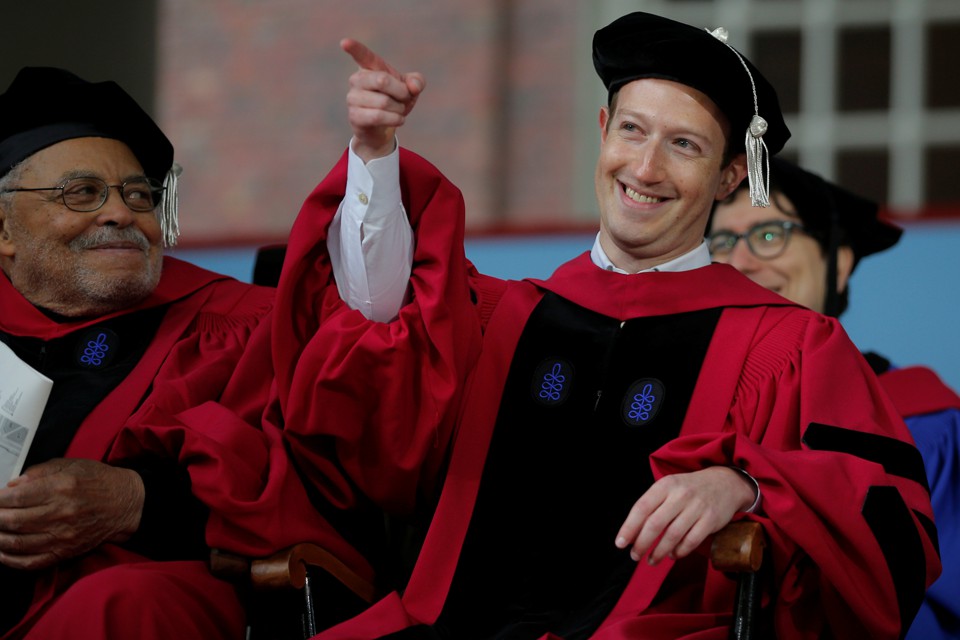
If Sullivan High School had a motto, it would be “Give me your tired, your poor, your huddled masses yearning to breathe free.” Its immigrant population now numbers close to 300—45 percent of the school’s 641 students—and many are refugees new to this country. This academic year alone, the Rogers Park school has welcomed a staggering 89 refugees—nearly three times as many as last year and far more than at any other high school in the city. The recent surge, fueled in part by an influx of Syrians, has turned the school into a global melting pot, with 38 countries and more than 35 languages represented. … How Sullivan got to this point is a fascinating story of a school that not long ago was struggling for survival.
In the space of just a few years, technology giants have begun remaking the very nature of schooling on a vast scale, using some of the same techniques that have made their companies linchpins of the American economy. Through their philanthropy, they are influencing the subjects that schools teach, the classroom tools that teachers choose, and fundamental approaches to learning.
The involvement by some of the wealthiest and most influential titans of the 21st century amounts to a singular experiment in education, with millions of students serving as de facto beta testers for their ideas. Some tech leaders believe that applying an engineering mind-set can improve just about any system, and that their business acumen qualifies them to rethink American education.
* * *
How Will the Qatari Diplomatic Crisis Affect Higher Education?
John Elmes | Times Higher Education
The ongoing diplomatic crisis in Qatar will cause “irreparable reputational damage” to the Gulf as a location for university branch campuses, according to an expert on the region.
Qatar has transformed itself as a global education hub in recent years, hosting overseas outposts of 12 international universities, but faces mounting uncertainty after four Arab states—Saudi Arabia, the United Arab Emirates, Egypt, and Bahrain—cut diplomatic ties. They have also moved to isolate Qatar by land, sea, and air, accusing it of funding terrorist groups.
* * *
Is This the Turning Point for Detroit’s Schools?
Erin Einhorn | Chalkbeat
Detroit schools have been buzzing these last two weeks with what feels like a fresh start. A new superintendent—Nikolai Vitti—has landed in the city and started his job as the first new leader of what is officially a new district. …
But spend a morning in a Detroit classroom and it quickly becomes clear exactly how much will have to change in this city before it looks anything like the “mecca” that Vitti imagines.
The Educational Crusade For News Literacy
Issie Lapowsky | Wired
Checkology is the latest creation of the News Literacy Project, a non-profit founded by the former Los Angeles Times reporter Alan Miller. Since 2009, the tiny eight-person non-profit has been working one on one with schools to craft a curriculum that teaches students how to be more savvy news consumers. Last year, in an effort to scale its impact, the team bundled those courses into an online portal called Checkology, and almost instantly, demand for the platform spiked.
“Fake news is nothing new, and its impact on the national conversation is nothing new, but public awareness is very high right now,” says Peter Adams, who leads educational initiatives for News Literacy Project. Now, Checkology is being used by some 6,300 public- and private-school teachers serving 947,000 students in all 50 states and 52 countries.
* * *
The International-School Surge
Alan Wechsler | The Atlantic
The origins of today’s international schools can be traced to 1924, but they’ve grown exponentially in the past 20 years. Originally created to ensure that expatriates and diplomats could get a “western” education for their children while working in far-flung countries, international schools have found a new purpose: educating the children of wealthy locals so those kids can compete for spots in western colleges—and, eventually, positions at multinational companies.
This dramatic change means increased opportunities for American teachers abroad—and, potentially, increased competition in the U.S. from a new demographic of English-fluent and cosmopolitan young people from all over the world.
* * *
How Income Inequality Stacks up at Stanford
Claire Wang | The Stanford Daily
As of 2013, more [Stanford] students come from the top 1 percent than the bottom 50 percent of the income scale. This statistic is true for the so-called Ivy-Plus colleges in general, which include the eight Ivy League schools as well as Stanford, University of Chicago, MIT, and Duke.
Amid a host of efforts to make Stanford more socioeconomically inclusive, why does the University’s student body remain so dramatically skewed toward the rich? Despite the expansion of financial aid in recent years, as well as reports of increases in students represented in the lower income quartiles, the lines tracing change in Stanford’s socioeconomic makeup remain remarkably flat. Ultimately, these trends have major implications for promoting social and economic mobility.
[“Source-ndtv”]





